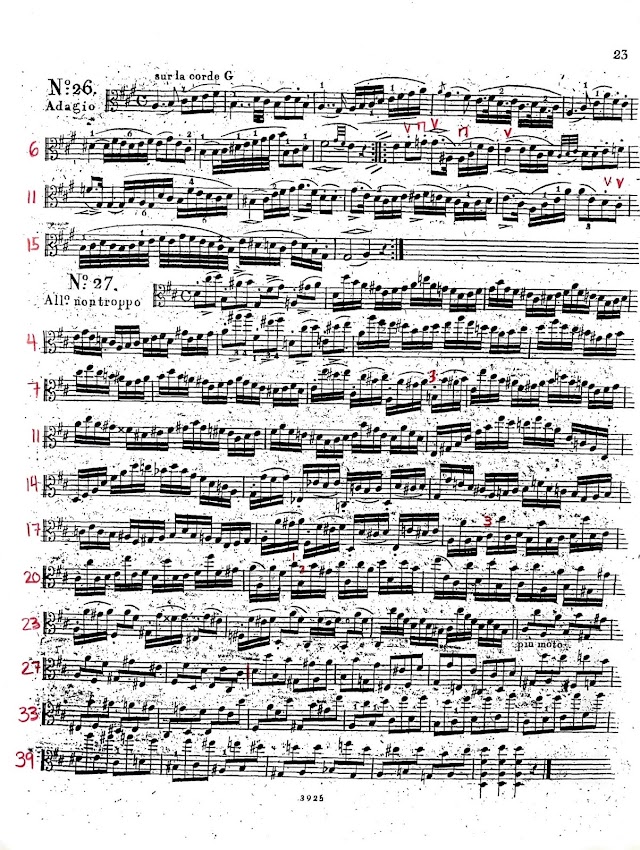Number 27 is definitely more on the Etude spectrum in this book of Caprices.
One of the main temptations is to go into higher positions for the octave passagework. Examples include measures 9 and 15, and the long run from mm. 18-35. Notice that at measure 36, Campagnoli finally writes fingering that inches you up the fingerboard, one position per measure. This is very intentional: it was customary in this period to play everything in first position unless otherwise marked, or impossible to play it any other way.
I found it harder to play the caprice in the intended first position at times, because one has to do more string crossings - and it also challenges the left hand intonation. Think of it as eating your vegetables, fellow violists. Happy etuding!
